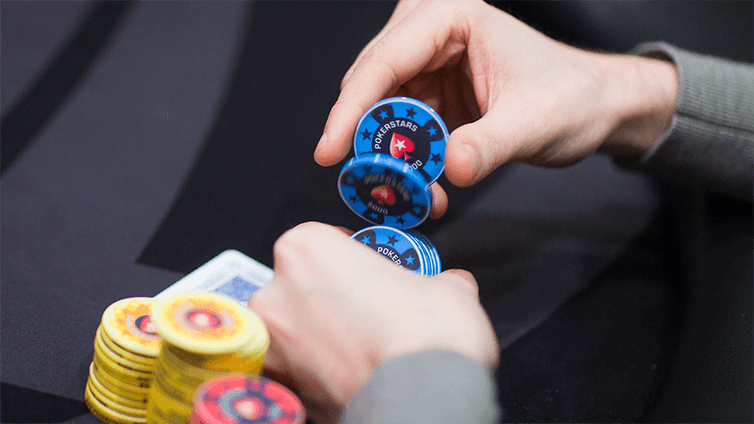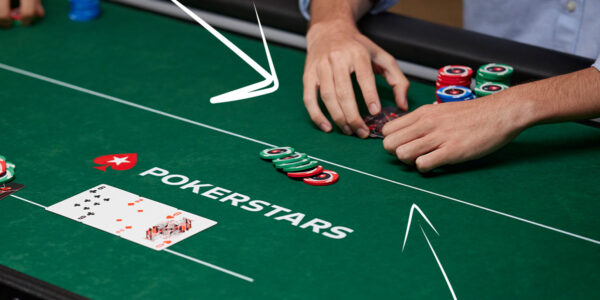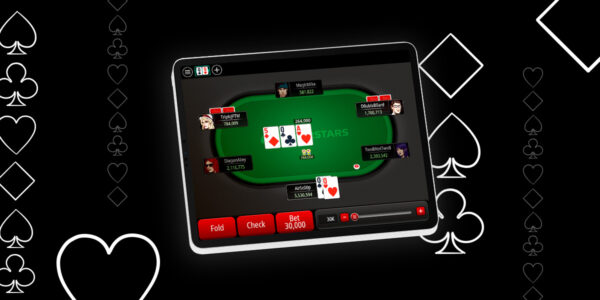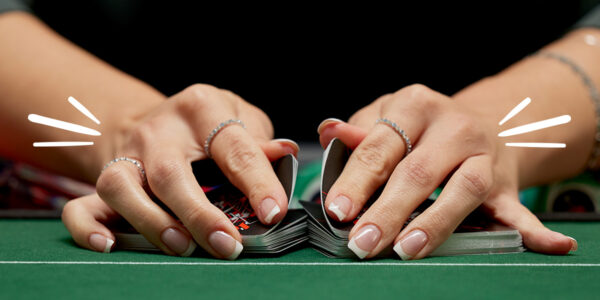6-Max Cash Poker – Facing 3-Bets
Our goal when defending our range to a 3-bet is to find the perfect balance between preventing Villain from profiting from 3-betting weak hand and avoiding becoming so call-happy that pure value ranges make too much money against us. In effect, we are assuming that an unknown regular is forming his 3-bet range with a good mix of stronger and weaker hands. I will not refer to recreational opponents again during this part of the series. Suffice to say for now that these players 3-bet a much tighter range of hands than the average regular and so we should favour nut potential holdings with more implied odds when calling such as suited cards and pocket pairs, staying clear of the dominated AJo category unless the price offered is irresistible.
Half and Half Defence
Depending on the game, we should aim to defend our opening range to a 3-bet somewhere between 40% and 55% of the time. At lower microstakes we will respect the 3-bet ranges of the more ABC opponents we are likely to encounter and remain closer to the 40% defence frequency. This is also a nice defence frequency for live $1-$2 and $2-$5 games, which run very tight in respect to 3-bet ranges. Ascending through the stakes and encountering Villains who apply more pressure and leverage more fold equity, it will sensible to be closer to the 55% frequency. The trick to playing an optimal balanced range vs. a 3-bet is two fold, we need range awareness and situational awareness.
Range Awareness
The ability to understand where you are in your opening range is a bit like feeling about in the dark for a light switch – it will be more successful if you know your surroundings. A useful exercise in preparation for facing 3-bets is to map out your opening ranges from each position and count how many combinations each one includes. Then pick a defence frequency based on how aggressive your games play in respect to 3-betting and multiply your starting combos by this percentage; this is the total number of combinations you should look to defend against an average regular in the player pool. The next step is to prepare which combos you will use to meet this defence frequency and break them up into value 4-bets at the top, calls in the middle, and then a few 4-bet bluffs for balance. Th bluffs should be hands that are not quite strong enough to call, but have enough potential to flop something from time to time incase Villain is rude enough to flat our 4-bet. Overall, our defence strategy can be defined in the following way:

This strategy can be defined as a polar approach to defending against 3-betting and is by far the most standard way of handling the situation. Note that we drop our 4-bet bluffing range whenever we consider Villain too crazy to fold to a 4-bet or too tight in the first place to have opened a non-premium hand.
Situational Awareness
Following charts blindly is not the way to beat poker games. It is essential that while we rely on charts to form a familiarity with the rough ideas behind our defence strategy, we are also alert and capable of adjusting which hands we defend to a 3-bet based on the unique factors present from situation to situation. Take the following unique circumstances for example:
- If our opponent’s 3-bet is too small and improves our pot odds significantly, we need to widen up our defence range, especially favouring hands with higher implied odds like small pairs and suited connectors and gappers.
- Out of position, we will want to err on the tighter side of a defence frequency, loosening up a little in position.
- If stack sizes are deeper, the nut potential hands like pairs, and suited and/or connected cards will go up in value. Big offsuit cards will decrease in worth.
- With shallow stacks, favour defending hands that can often make a strong one pair and stack-off profitably post-flop.
An Example – BU vs Blinds
When we open the BU, we expect a wide array of hands to be profitable steals due to the combination of pre-flop fold equity and post-flop positional advantage. This means that we start off with a very large body of hands and that we will need to defend a fairly large body of hands in order to meet our defence requirements. Most opponents, even at the lower stakes online, will do a reasonable job of applying pressure to our opening range in this spot, being well aware that it usually spans something like 600-800 combinations (around a 40-60% range).
If we open to a standard 2.5bb and Villain makes it a standard 9-10bb from one of the blinds, we will react in the following default way: Green hands are value 4-bets, dark blue hands are calls and red hands are 4-bet bluffs. Light blue hands are folds to the 3-bet and anything outside of this is not open-raised in the first place.

Our value 4-bet range here is perhaps tighter than you might have imagined. We have to be very careful in ensuring that we understand the difference between hands that are ahead of Villain’s average 3-bet range and hands that are ahead of Villian’s range for 3-betting and continuing to a 4-bet. As we saw when we looked at value betting, the former description is insufficient for electing a hand as a value bet, but the latter is exactly what is required. While we expect a hand like AQs or JJ to be comfortably in front of Villain’s 3-bet range, we have to acknowledge that many players react to 4-bets by either shoving or folding (its much simpler to play this way after all) and so, if, after these hands have faced a shove, they feel a little uncomfortable getting the stack in, they were too thin to value 4-bet in the first place.
Our calling hands here are formed from a mix of frequent top pair flopping offsuit big cards, versatile suited medium cards and medium pairs and a few lower hands like 66 and 87s that thrive more from implied odds. The goal with these defends is not necessarily to make any money on the hand, but to perform better than folding, which costs us 2.5bb per hand. We saw this concept at work in Part 5 on calling opens, particularly when we examined our lucrative pot odds in the big blind. It is fair to say that some of the hands in blue in the above figure are just marginally better to call than to fold with equal post-flop skill levels.
Finally, the red 4-bet bluff range favours blockers. Villain is often going to be looking to shove over a 4-bet and deny us from realizing any of our equity when he holds the top part of his range. Therefore, holding an Ace or a King is instrumental in increasing our fold equity and cutting back on Villain’s shoving frequency by removing some of the combinations of AA, KK and AK from the deck. All else being equal A5s will make a higher EV 4-bet bluff than Q9s and so we choose combos like A5s that combine good removal and post-flop playability in the event that we get called.
Conclusion
Many players feel uncomfortable when moving up to games where there is a good deal more 3-betting going on. As we have seen, avid preparation and situational awareness form the key to acclimatizing to this new environment. We do not have to become wildly aggressive to combat active 3-bettors; we just need a solid pre-prepared strategy going into the battle, and the alertness to modify it as we pick up further reads on the opponents.
Condimentum Nibh
Donec sed odio dui. Cras mattis consectetur purus sit amet fermentum. Vestibulum id ligula porta felis euismod semper. Curabitur blandit tempus porttitor.













